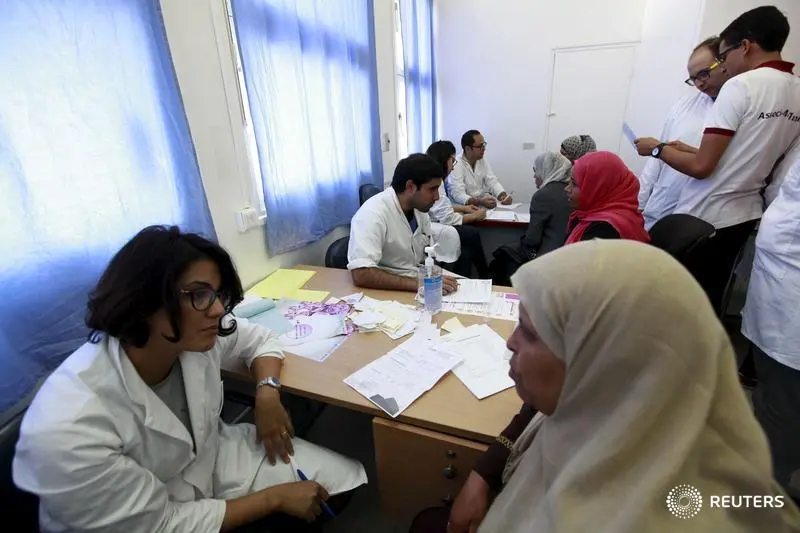PHOTO
Reforms to Tunisia's health care system are under way with a modernisation programme aimed at encouraging preventive care, although increased pressure on the national insurance fund may constrain the number of patients who benefit from the changes.
Revitalising the public system
In August 2015 Saïd Aïdi, then-minister of health, announced a reform programme for the public health care system. According to Aïdi, the reforms will focus on prevention of public health issues, ranging from addiction to chronic diseases, such as diabetes, hypertension and cancer, among other things.
Another component of the reform programme is the promotion of innovation in the health care sector, such as the use of telemedicine - the practice of using IT to diagnose and treat patients remotely - which is expected to streamline procedures. Furthermore, a TD80m (€32.3m) fund has been earmarked for the digitalisation and archiving of medical records while an automated prescription delivery system will be created to help rationalise pharmaceuticals-related spending, Faouzi Mehdi, chief of staff at the Ministry of Health, said during a conference in March.
Meanwhile, the programme also aims to consolidate the public health care system. Health services - including hospitals, teaching units and primary care clinics - are being reorganised into regional clusters with expanded resources and increased operational autonomy. Each cluster will offer a range of specialised establishments and doctors, which should go some way to addressing understaffing in rural areas. As of 2014 there were 3.5 doctors per 1000 people in Tunis, but only 0.4 per 1000 in the inland governorates of Kasserine or Sidi Bouzid.
Speaking with OBG last summer, Aïdï explained the clusters as being crucial to improving efficiency, noting that "the long-term objective is for more than 90% of clinical cases to be addressed in each of the territorial clusters. Each territorial cluster will need to have a full range of specialised establishments and doctors. This will reduce congestion, particularly for those patients suffering from severe pathologies."
Finally, the reforms intend to strengthen the quality and standards of public health care through vocational training, while also improving institutional governance and financial management.
Fiscal sustainabilityThe reforms should help significantly improve the performance of the health care sector, although the current mechanism for funding is coming under increasing pressure as the patient population expands.
Created in 2004 Tunisia's National Health Insurance Fund (Caisse Nationale d'Assurance Maladie, CNAM) aims to provide universal coverage on treatment delivered in both public and private health care institutions. However, in an interview with local media late last year, Aïdi said that Tunisia's health financing system was under pressure from a doubling in the population receiving free or reduced benefits since 2011.
The spokesperson for the CNAM, Younes Ben Jamaâ, told local press in March of this year that the institution had accumulated debts of up to TD1.4bn (€565.9m), in part due to delayed transfers from the country's social security and retirement funds.
This has caused the fund to face difficulties in meeting payment schedules for pharmacies, for example. According to statements by Rached Gara Ali, secretary-general of the Association of Private Pharmacy Owners, outstanding debt owed to pharmacies was around TD40m (€16.2m) as of last summer, although that has reportedly come down in the months since to TD3m (€1.2m).
The pressure on the CNAM is in part due to high demand, but also due to the fact that public health care investments have increased at a lower rate than demand since the late 1990s, which has pushed more Tunisians towards private facilities.
The eight years leading to 2013 saw total annual health care spending double to reach TD5bn (€2bn), equivalent to 7.1% of GDP, according to Ministry of Health figures. Of this total, 37% of costs were assumed by Tunisian households, 35% by the CNAM and 28% directly by the government. This means that public spending on health accounts for roughly 4.4% of GDP, which is slightly lower than peer economies at around 5%.
As a result, private facilities are becoming more popular and sector stakeholders are calling for more comprehensive health insurance coverage. Broadening the types of care covered under the CNAM could also better protect individuals who find it difficult to pay for unforeseen medical costs. For example, the CNAM partially covers birth-related health expenses at private facilities, yet does not cover costs related to premature births, which are much higher. If coverage were to be extended to all types of deliveries, the private sector would also no longer need to worry about requiring downpayments at admission to protect themselves again the risk of non-payment.
"The growth of the private sector's role in Tunisia's health care system depends on favourable public policy and on the expansion of health insurance coverage," Mourad Kharouf, general manager of Polyclinique Les Jasmins, told OBG.
© Oxford Business Group 2016












